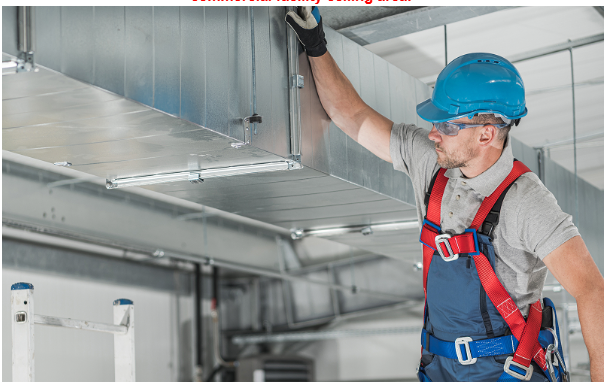Airborne dust is more than a surface-level concern. It affects indoor air quality, triggers respiratory issues, and can compromise equipment performance. In many commercial or industrial settings, the presence of fine dust particles in ventilation systems, ceiling structures, and overhead fixtures pile up silently. While standard cleaning routines focus on floors, desks, and windows, these upper-level zones remain neglected. This is where air dust cleaning services become critical to a healthier environment.
High Dusting Goes Beyond Basic Maintenance
High dusting is a specialised process that targets dust accumulation in elevated areas such as pipes, vents, beams, and lighting fixtures. These spaces are difficult to reach and typically excluded from general janitorial duties. Dust settling in these areas gradually circulates throughout a room, worsening air quality and increasing the risk of contamination, especially in food processing, healthcare, and manufacturing.
By integrating high dusting into routine facility care, building managers can reduce the circulation of harmful particles and minimise the need for reactive maintenance down the line.
Professional Dust Removal Protects Sensitive Equipment
Certain industries rely heavily on precision equipment and sensitive machinery. Dust buildup in these environments can interfere with airflow, cooling systems, and electronic sensors. Without proper dust removal, performance can deteriorate, leading to increased downtime and potential financial losses.
Professional dust removal is designed to protect assets by eliminating accumulated particles from delicate or hard-to-reach areas. Trained teams use tools and methods that reduce the risk of spreading dust, ensuring thorough and safe cleaning.
Supporting Health and Compliance Standards
Poor air quality in enclosed spaces contributes to allergies, respiratory irritation, and a decrease in overall well-being. Facilities that ignore ceiling-level dust risk become non-compliant with health and safety regulations. This is especially true in buildings with high human traffic, such as schools, offices, hospitals, and commercial venues.
Incorporating air dust cleaning services into a maintenance programme supports a healthier indoor environment while demonstrating a commitment to health and safety compliance.
Learn More: Air Duct Decontamination on Ships: A Critical Step for Crew Safety and System Efficiency
Preventing Dust-Related Fire Hazards
Dust accumulation near electrical wiring, HVAC units, or industrial exhaust systems presents a fire hazard that is frequently overlooked. In facilities where flammable particles or fibres exist, unaddressed dust becomes a fuel source. Cleaning services are trained to identify and reduce risks, especially in high-risk areas where maintenance neglect can lead to serious outcomes.
Ensuring that dust does not collect in hot spots or areas with significant airflow is an essential part of building safety.
Maintaining the Longevity of HVAC Systems
HVAC systems are designed to regulate airflow and temperature, but their efficiency is highly dependent on how clean they remain. When air ducts and vents become clogged with dust, they must work harder to maintain performance. This increases energy use and leads to more wear and tear.
Engaging in regular air dust cleaning prevents dust from being pulled into or blown out through the HVAC system. It supports consistent airflow, extends the lifespan of equipment, and contributes to lower energy consumption over time.
Enhancing Overall Cleanliness Perception
The cleanliness of a space affects how it is perceived by employees, customers, and visitors. Even if floors shine and surfaces sparkle, visible dust on air vents, light fixtures, or pipes creates an impression of neglect. High dusting services help maintain a visibly clean environment across all levels of a facility—not just eye level.
This added attention to detail assists with the overall image of a business and promotes a more professional atmosphere for clients and staff alike.
Making Dust Management a Scheduled Priority
Dust management is most effective when it becomes a structured part of a facility’s maintenance calendar. Waiting until dust becomes visible or causes problems can result in higher remediation costs. By scheduling air dust cleaning services regularly, organisations can proactively control indoor air quality and equipment health.
High dusting and professional dust removal should be approached with the same level of priority as any other preventative maintenance task.
For more information about air dust cleaning services, visit BELFOR Restoration Services today.

